|
|
HOW?
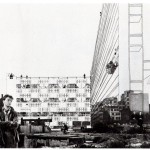 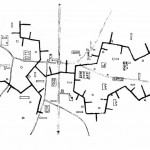 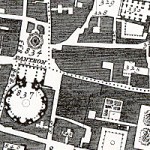 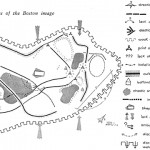
Golden Lane, Alison & Peter Smithson, 1952 | The Nolli Map, Giambattista Nolli 1748 | The Image of the City, Kevin Lynch 1960
To explore this thesis, I will design a day care/elderly centre/dog park complex in Hong Kong through a series of analytical and projective mapping experiments and use these observations to trial possible architectural forms.
1. identify intended program and compare to actual uses of the space [by Draft 1.0]
2. select appropriate architectural intervention based on needs of the people [by 2.0]
3. map patterns of activity (initiators, inhibitors, desire lines) [Lynch/Nolli style by Draft 3.0]
4. map/render projections of site use, views, volumes [Smithson style by Feb Review 1.0]
6. massing trials through modelling (1:500 foam or 3D modelling) [by early March, Wk 8]
7. design iterations of scheme + details (1:100 diagrams, drawings, model) [April, Wk15]
8. prepare final presentation, storyboard, scale, test prints [early May – early June, Final]
ARTIFACT
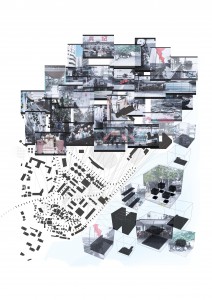
Snapshots of a Small Town, 2015
Jenny Ly
Whether we are apart of it or observing it, we live in an environment of continuous motion and activity. Absorbing only moments or frames of action, we find pause and rest in unexpected in-between spaces attractive to users regardless of their intended program. With a focus on transitional space and a goal of enhancing the experience through space, this thesis explores how dynamic architectural forms can be inspired by analysing the flow of people.
WHAT?
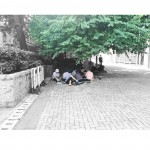 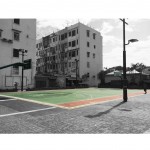 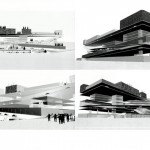 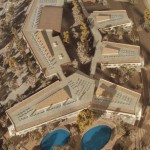
SK Gambling, Jenny Ly, 2015 | Empty, Jenny Ly, 2015 | Z-Mall, MVRDV 1997 | FeildenCleggBradleyStudios, Northampton, 2005,
The test case for this thesis is a day care/dog park/elderly centre complex to be sited in Sai Kung Town, Hong Kong. The complex will make use of existing underused spaces in the town comprising of a basketball court, two small playgrounds and an open square.
After multiple site visits I have observed that the prevailing user demographic
consists of senior citizens, small children and domestic dogs. Children tend to gather at the benches of the basketball court or playgrounds. The elderly gather under trees or under a single shelter in the open square. Dog walkers are left to circulate without rest except on the occasional bench or at dog-friendly restaurants. The result is that each user group stays isolated at his/her own above-mentioned haven, only to passively observe the activities of the other. There lies much potential in connecting these user groups and events to create new spaces and subsequently new events, interactions and activity that can breathe life back into the town. Because there is currently no formal space for this type of gathering, it should be interesting to see how new architectural forms can be inspired by creating connections between these fragmented moments, people and objects; and vice versa to see how architectural forms can create new and surprising “moments” throughout the space. Particularly in a city where developable land is scarce, space is expensive, and the population density is high; this study aims to explore how we can potentially improve building design by making use of and enhancing the often overlooked transition and circulatory spaces.
WHY?
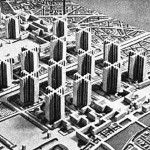 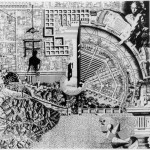 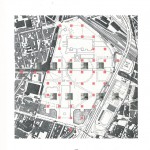 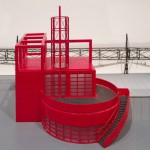
Le Corbusier, 1925, Plan Voisin | Aldo Rossi, 1977, La Citta Analoga | Bernard Tschumi 1982, Parc de la Villette
CIAM and pioneers of the Modernist movement strived to improve living conditions with a universal and revolutionary approach to design. With a method of deriving form from function, typical designs resulted in clean, simple forms ready to replace the existing built environment. In the spirit of tabula rasa and the future, the work generally disregarded the mental and emotional attachment of users to their existing spaces. In response to this cold approach, work by Aldo Rossi emphasized the importance of the past, collective memory, and integration of new building forms into existing living space where they can become a part of the cities image, rather than dismiss or replace it.
Recalling yet straying from both approaches, Bernard Tschumi investigates events and experiences that happen in spaces at present, focusing on the users and how form can arise to respond to or create events. Despite their differences, the three figures respond to form in relation to its user: the first by viewing the user as a passive occupant of architectural form; the second by viewing architectural form as passive to the changing needs of the user throughout time; and the third by viewing architectural form as a stimulator of events where neither form nor the user is passive.
This thesis builds upon the ideas of Tschumi in particular and his understanding of events in space. Yet, instead of investigating each space/event individually or the transition leading up to it, the study will focus on the experience in between them in its own right. That is, this project will explore the sequences of unexpected moments and possible uses of space between each programmed space to experiment with dynamic and lively architectural forms responsive to the fast-paced, dense built urban environment today.
BIBLIOGRAPHY
1. Aldo Rossi, 1966, The Architecture of the City, MIT Press
2. Bernard Tschumi, 1994, Spaces and Events, Architecture and Disjunction, MIT Press
3. Jan Gehl, 1980, Life Between Buildings, Van Nostrand Reinhold
4. Le Corbusier, 1933, The Athen’s Charter, Grossman Publishers
1. Kevin Lynch, 1960, The Image of the City, MIT Press
2. Stan Allen, 1999, Points + Lines: Diagrams and Projects for the City, Princeton Press
1. Adam Frampton, Jonathan D Solomon, Clara Wong, 2012, Cities without Ground: A Hong Kong Guidebook, ORO Editions
2. MVRDV, 2006, FARMAX: Excursions on Density, 010 Publishers (Z-Mall, MVRDV; Carstadt, Bannenberg; New! Babylon, Wall)
3. RIBA Building Futures, Jane Werwick, 2008, Building Happiness (Northhampton Academy by Keith Bradley)
|